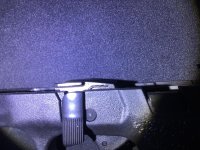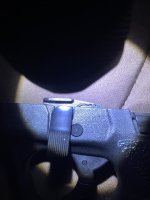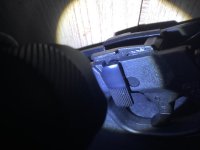xdmshooter59
Member
- Joined
- Jan 20, 2017
- Messages
- 112
- Reaction score
- 65
NOn,
Personally, I honestly commend you for bringing this potential problem to light and a possible fix. Had I not seen this thread I likely would have never noticed that the spring was not fully seated and because of your thread I did seat it. I may have never had an issue, but now I have something to watch for.
No company is perfect, large company or small. Defects are a part of manufacturing. I work in Quality control and sometimes business decisions ($) take precedence over quality decisions. That usually comes down from upper management. Sometimes corners are cut due to cost savings and backfire, other times the design is just plain flawed. I don't consider myself a so called "S&W coolaid drinker" If I have a legit gripe I won't be bashful in stating so. In the case of the Shield and this particular issue we have no way to know or can we speculate what percentages of Shields are failing due to this issue. My best guess is a small percentage in comparison to the sheer number of Shields sold and that are actively in use.
But I have to admit when I first came across the title "Fix your Shield before it Fails !!" It did sound like a not "if" but "when" it happens statement. Please don't take it the wrong way, I think most of us are applauding you for bringing this up.
Personally, I honestly commend you for bringing this potential problem to light and a possible fix. Had I not seen this thread I likely would have never noticed that the spring was not fully seated and because of your thread I did seat it. I may have never had an issue, but now I have something to watch for.
No company is perfect, large company or small. Defects are a part of manufacturing. I work in Quality control and sometimes business decisions ($) take precedence over quality decisions. That usually comes down from upper management. Sometimes corners are cut due to cost savings and backfire, other times the design is just plain flawed. I don't consider myself a so called "S&W coolaid drinker" If I have a legit gripe I won't be bashful in stating so. In the case of the Shield and this particular issue we have no way to know or can we speculate what percentages of Shields are failing due to this issue. My best guess is a small percentage in comparison to the sheer number of Shields sold and that are actively in use.
But I have to admit when I first came across the title "Fix your Shield before it Fails !!" It did sound like a not "if" but "when" it happens statement. Please don't take it the wrong way, I think most of us are applauding you for bringing this up.
Last edited:



